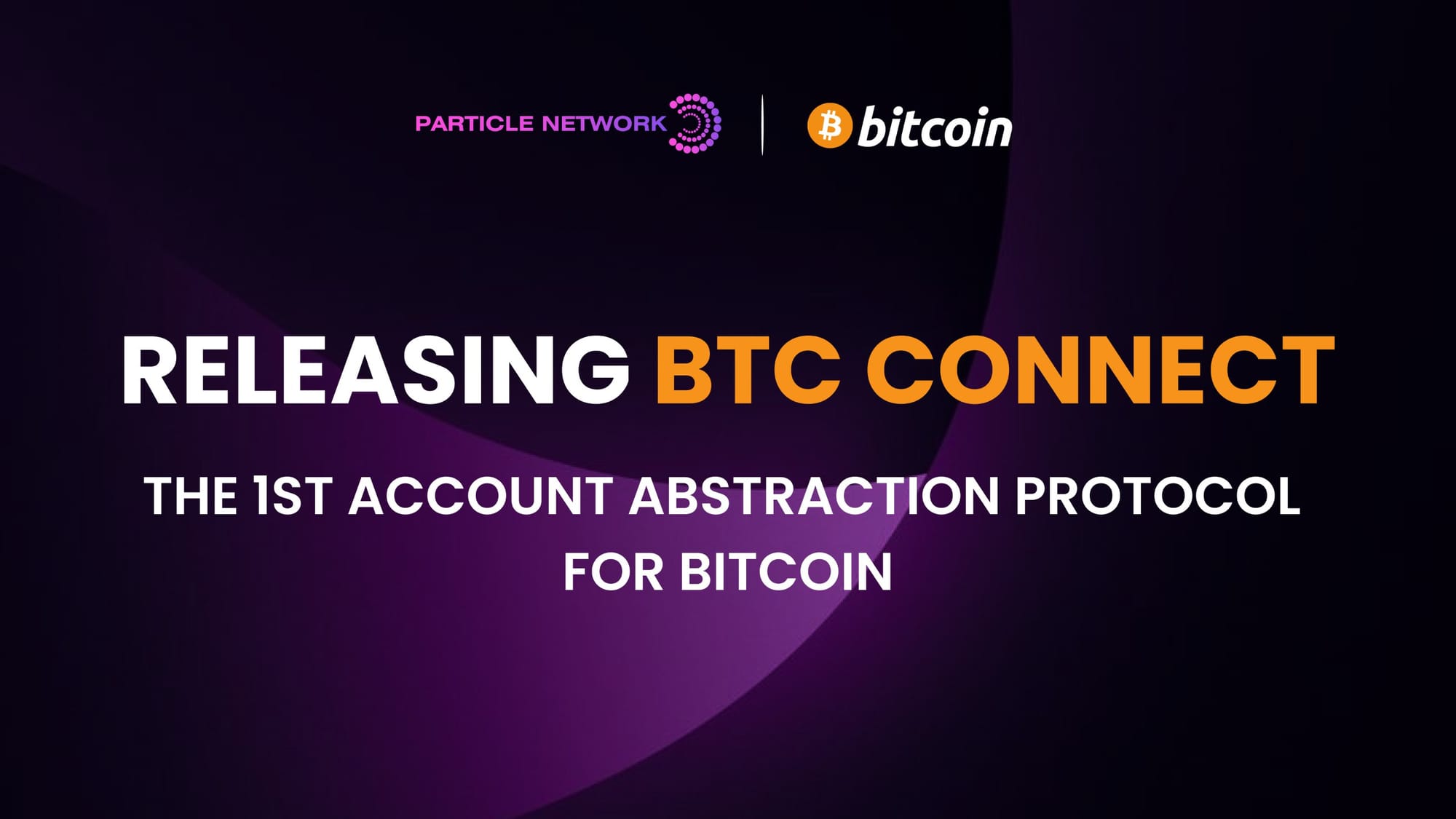BTC Connect: Bringing Account Abstraction to Bitcoin (Demo Inside!)

Table of Contents:
Recently, we announced the development and initial partner ecosystem for BTC Connect –the first EVM-compatible ERC-4337 AA protocol for Bitcoin, supported by leading players in the BTC universe.

Today, we are bringing you all the details about BTC Connect’s design and motivations, what it means for the larger Bitcoin ecosystem, and the first demo for developers interested in integrating BTC Connect into their dApps. You’ll find that this design enhances flexibility for existing applications within Bitcoin while opening numerous new use cases, which we’ll dive into.
Let’s start with the basics.
Why Bitcoin account abstraction?
In short, we are bringing full-stack account abstraction to Bitcoin so that you can reap all the UX benefits of AA on Bitcoin, without ever touching a MetaMask wallet –and, in some cases, holding either only native BTC or no assets at all due to gasless transactions.
Bitcoin is by far the most valuable blockchain, as well as the industry’s standard for security. While innovation stagnated on the chain for a long time, recent developments (such as the emergence of Ordinals and BRC-20 “tokens”) have re-sparked the interest of builders, who are rapidly developing tools to grow its ecosystem.
Among the above, various Bitcoin Layer-2s have emerged to expand the BTC ecosystem beyond the computational limitations of its base chain. Currently, there are EVM-compatible Bitcoin L2s, such as the Merlin Chain, BEVM, and bSquared –however, while these networks represent a stepping stone for the industry, their design and supporting infrastructure still result in considerable friction at a wallet and UI/UX level when interacting across networks. Because of this, their adoption by a mass market still seems unfeasible.
With BTC Connect, we aim to tackle these difficulties while bringing the benefits of AA, already making a difference in other ecosystems, to Bitcoin. Furthermore, by utilizing full-stack account abstraction to incorporate cross-compatibility into their dApps, developers can tap into the value siloed in the Bitcoin network, enabling new synergies and pushing the growth of decentralized technologies.
How BTC Connect works
BTC Connect enables AA on Bitcoin by unifying users’ Bitcoin accounts and EVM-based smart accounts. This happens by assigning a Bitcoin wallet as a Signer for a smart account on a Bitcoin L2 or EVM network, making users’ existing Bitcoin wallets the sole point of interaction, without the need for additional interactions or interfaces.
As such, our architecture takes advantage of the ERC-4337 design and EVM-compatible chains to introduce a Smart Account, Paymaster, Bundler, and a unique Bitcoin-specific wallet connection modal. Specifically, the latter facilitates native Bitcoin wallet connection (through Unisat, Phantom, BitGet, Leather, or OKX) by generating an EVM smart account to be “assigned” to the target Bitcoin wallet.
Importantly, as a result, all interactions on both the smart account and the original Bitcoin wallet are, from this point onward, controlled through the Bitcoin wallet’s interface. Interactions by the user's Smart Account can be either funded by the account’s owner directly or pre-paid by the dApps themselves (via Paymasters). Thanks to this, the user can interact with protocols through gasless transactions or by paying gas using assets on their Smart Account (typically $BTC, but could also be other tokens, like $USDT in some cases). This allows users to access AA on EVM networks without downloading additional plugins/applications or managing different keys.
BTC Connect extends the functionality of Bitcoin wallets, allowing a user to use a single Bitcoin wallet to send native Bitcoin transactions, interact with the Ordinal ecosystem, and execute logic (including gasless, and popup-less interactions) on compatible EVM dApps and Bitcoin L2s.
The above is diagrammed below:

In short, and as you can see, the public key of the user’s connected Bitcoin wallet is used directly to execute native Bitcoin transactions, and for the generation of an EVM EOA. This EOA, in turn, is used to create a smart account with the Bitcoin wallet as its Signer. This makes the Bitcoin wallet’s signatures EVM-compatible, allowing the same wallet to handle seamless AA-powered Layer-2 transactions and Layer-1 Bitcoin transactions.
Video demonstrating an interaction requiring only a Bitcoin wallet's signature.
To see a full breakdown of the chains supporting BTC Connect, go to our Network Coverage page.
Benefits of Bitcoin account abstraction
Beyond the points stated above, covering the wallet- and interface-level interactions between L2s and Bitcoin wallets made simpler by integrating AA on Bitcoin, BTC Connect opens the path for several additional benefits. In an ecosystem with a growing presence of EVM-compatible L2s, dApps integrating BTC Connect can also benefit from:
- Enhanced UX: With simplified user interactions and transaction structures, account programmability enables popupless signatures, session keys, automated transactions, simplified paths, batched transactions, and other UX-first features currently unavailable for the Bitcoin ecosystem.
- Improved security: Users could benefit from additional security layers, such as multi-signature schemes or complex conditional transaction criteria, increasing the safety for users.
- Privacy: Bitcoin account abstraction can potentially incorporate more advanced privacy features , allowing users to have greater control over their transaction data.
Importantly, BTC Connect can also aid the adoption of the Bitcoin L2 ecosystem by simplifying the process of porting users with a streamlined onboarding and interaction path. This first-of-its-kind dynamic creates an opportunity for Bitcoin users to rapidly adopt the more advanced practices in the Web3 space without having to migrate to other chains.
Parting thoughts
Particle Network is positioning itself as a leading player in the account abstraction ecosystem. In the last few months, we open-sourced our Omnichain Paymaster, and had our Bundler cross 4.4 Million UserOps. As a firm dedicated to reducing the onboarding and interaction friction within Web3, we’re proud to contribute to publicly release this contribution to the AA ecosystem. BTC Connect is a key milestone on our path toward our goal of chain abstraction, furthering the UX of the Web3 ecosystem as a whole.
If you’re interested in trying out BTC Connect, you can play with our interactive demo. For developers looking to begin using BTC Connect, take a look at our documentation or sample GitHub repository.
Particle Network's Wallet Abstraction solutions are 100% free for developers and teams. By integrating them, you can set your project in a path to leveraging chain abstraction.
About Particle Network

Particle Network powers chain abstraction, addressing Web3's fragmentation of users and liquidity. This is enabled by Particle's Universal Accounts, which give users a unified account and balance across all chains.
Share this article
About the author(s)


